|
In the post war period, Vickers embarked on a modernisation programme at their Newcastle yard in order to prepare for prospective work on passenger and cargo vessels.
A major part of this programme was to replace the plate racks at the back of the platers' shed with a semi-automated process of plate receipt by rail, intermediate storage, handling through the plate levelling machine, shot-blasting, painting and finally delivery to the production shops.

Above plan is courtesy of Terry Summerson. CLICK to enlarge/BACK to return
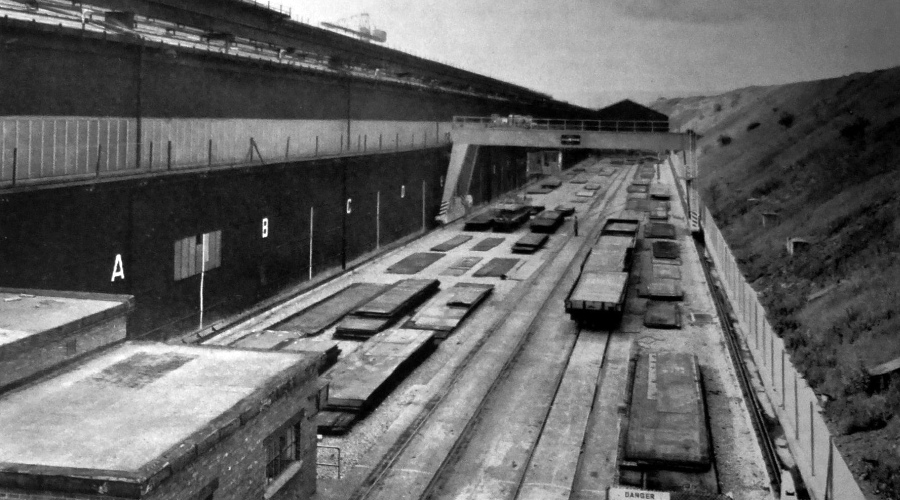
Steel plates were brought in by rail to the unloading area where a crane with magnetic hoists would unload them and store them into allocated bays.
The plates were stored flat, rather than in the nearly vertical racks, because they were easier to pick up with magnetic hoists and with minimal manual intervention.

The plates were then moved by the magnetic crane into the Plate Pile Area, with their position determined by their physical characteristics and how soon they would be required in production.
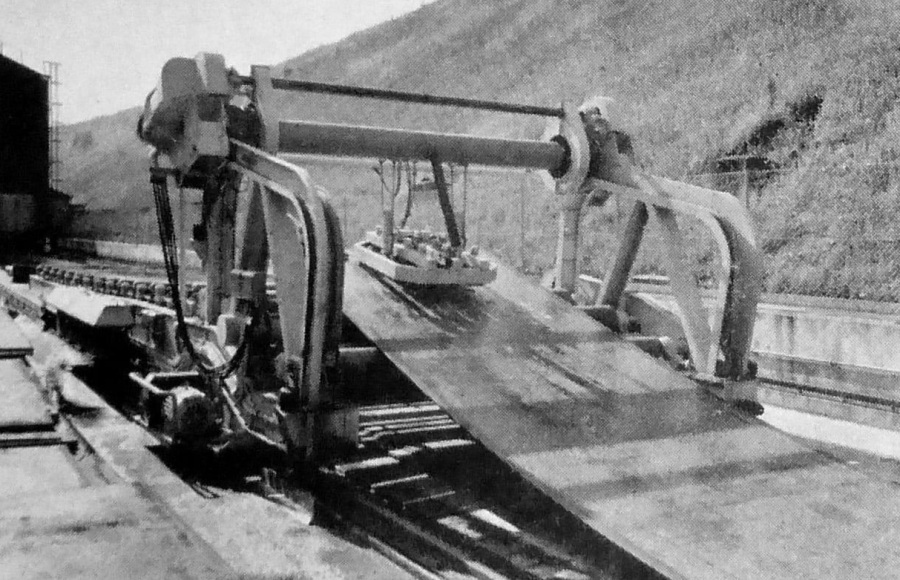
When the plates are required in production the crane would pick them up from the Plate Pile Area and place them on the Captivator track, where the automatic Captivator could pick the plate up and move it inside the Plate Shop.
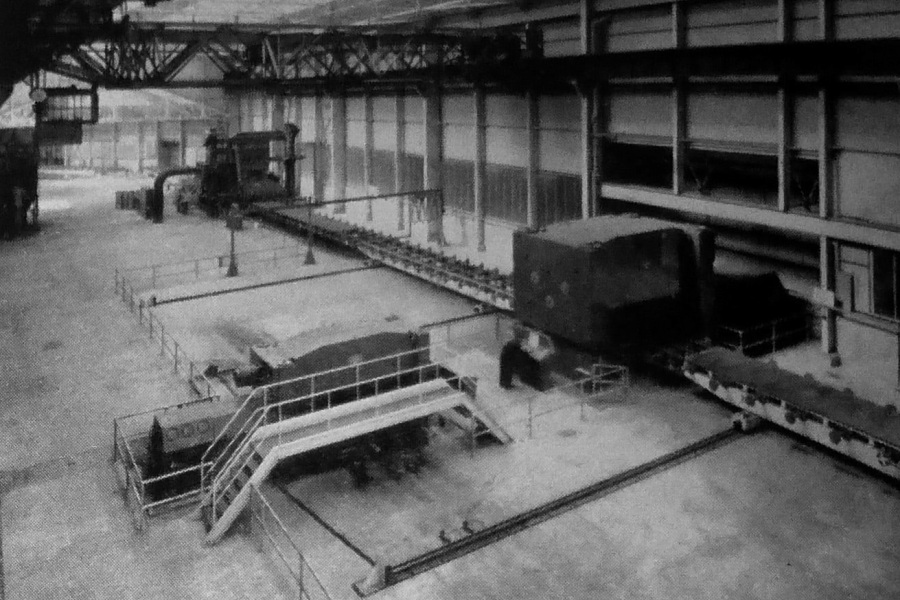
The first stage in the Plate Shop was to level or flatten the plate. There were two machines for this task, one heavy and the other light, depending on the thickness of the plate, standing side by side.
Two Cross Traverse Conveyors would move the plate to the required Leveller and then back to the inline flow after levelling. The next process down the line was Shot Blasting to remove any scale from the plate followed by a Primer Paint Spraying process.
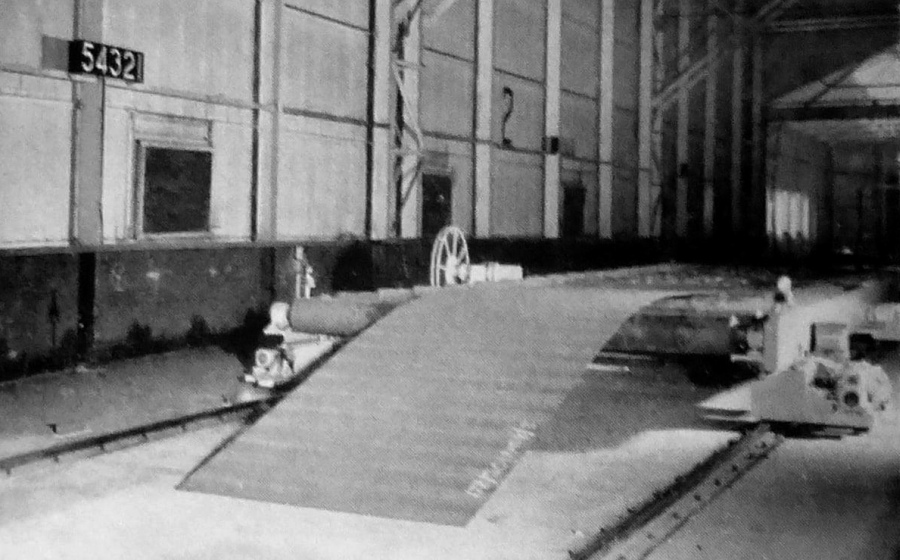
After painting and drying the plate was moved by conveyor and a re-alignment turntable to a position where it could be picked up by a Collocator Truck which would then automatically place the plate at the head of one of five production bays where it could then be picked up by overhead cranes which travelled at right angles to the line of the Collocator Truck flow, up and down the production bay.
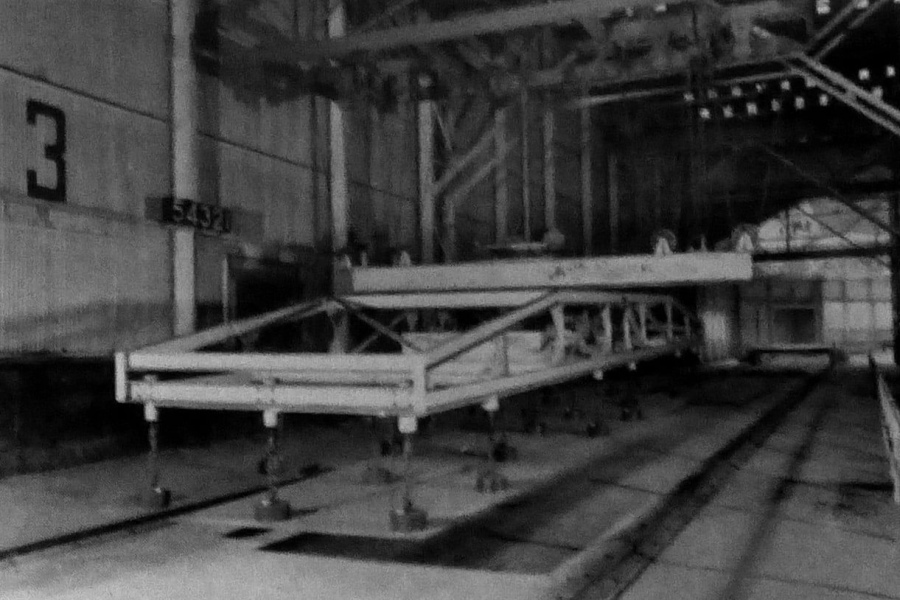
An overhead crane fitted with magnetic yokes.
All of the above photos are courtesy of Terry Summerson
UNDER CONSTRUCTION
Use the browser BACK button to return
|






